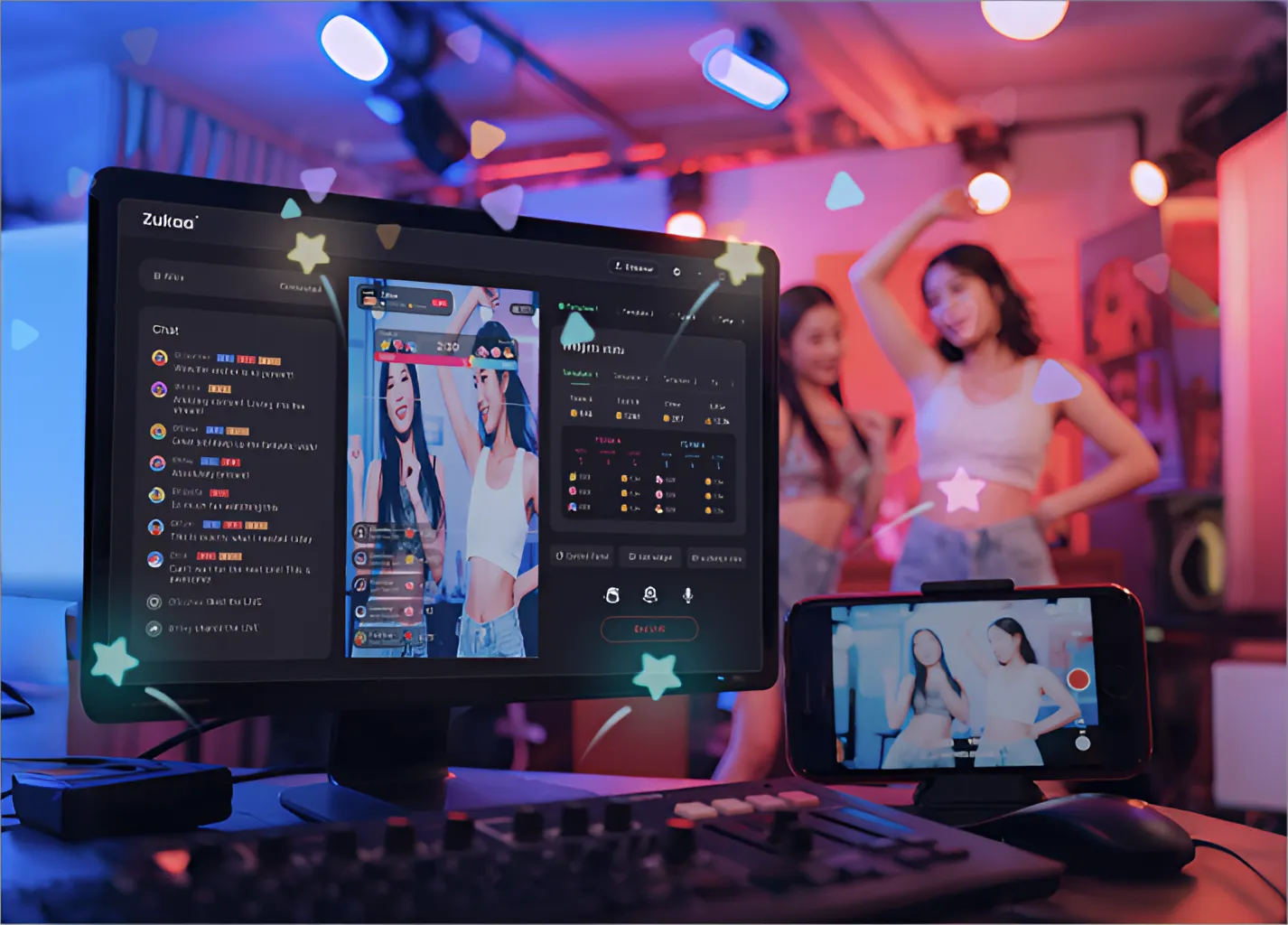Most creators and agencies understand the importance of data—but how can it be effectively converted into actionable strategies? In the fast-paced world of digital marketing, livestream analytics provide valuable insights that can shape the success of campaigns. By analyzing key performance metrics, creators and agencies can tailor content in real time, ensuring optimal results and success.
In this article, we've highlighted the most important metrics that should be used to design better strategies. By focusing on these key performance indicators, agencies can optimize their livestream efforts, and achieve desired outcomes.
1. Analyze Drop‑Off Points
The first step to improving livestream performance is understanding when and why viewers lose interest. Start by diving into retention graphs, watch time reports, and audience heatmaps. These tools help pinpoint the exact moments when viewers leave the stream. Common drop-off zones often include slow or overly long intros, technical delays, irrelevant tangents, or stretches with low interactivity.
Once you’ve identified these patterns, it’s time to optimize. Structure livestream like a narrative:
Start strong with a clear hook in the first 10–20 seconds — this could be a bold statement, a giveaway tease, or posing a question to spark engagement.
Create moments of interaction strategically throughout the stream. For instance, insert polls, live shoutouts, or viewer challenges around the 3–5 minute mark — a common dip point in attention.
Avoid long-winded monologues or filler content; every section should serve a clear purpose — entertain, inform, or convert.
Ultimately, by studying where and why people drop off, you’re not just gathering data — you're getting a blueprint for better, more engaging content. Each stream becomes an opportunity to discover how to improve retention and keep your audience engaged.
Viewers often join halfway through, and without context, they may struggle to engage. Here’s how to include them seamlessly:
Give a brief, friendly greeting
A quick “Hey everyone joining now, welcome!” acknowledges newcomers without derailing the flow.
Offer a quick recap
In 10 seconds or less, summarize what’s happened so far. This resets the context nicely.
Use recurring engagement anchors
Repeat your key points as you move through segments. Overlay graphics like “Just joining? Here’s what we’ve covered…” to make the viewers who just joined feel included.
Insert time‑based interaction beats
Schedule polls, Q&As, or fun challenges every 5–10 minutes. These refresh both new and existing viewers, anchoring them back into the stream.
Tease upcoming content
Keep everyone hooked with lines like, “In about 10 minutes, I’m revealing…” A well‑placed teaser works wonders to maintain curiosity and retention throughout.
2. Track Viewer interactions
While total viewer count might seem like the most important livestream metric, it’s actually a vanity metric if it’s not paired with real interaction. The real value lies in understanding when and why your viewers engage, because those are the moments that signal interest, trust, and potential conversion.
When a viewer comments, taps a reaction, sends a gift, or clicks a link, it shows they’re not just watching — they’re actively invested in your content. It reveals intent. High-interaction moments often align with points of influence — maybe it was a product demo, a flash sale, or an emotional story you told. These are your conversion triggers.
How to Use This Insight:
Comment or ask questions
Tap reactions or emojis
Participate in polls
Send virtual gifts
Click on shoppable links
Correlate these moments with what was happening on-screen:
Were you demonstrating a product?
Did a flashy overlay just appear?
Did you mention a time-limited offer or incentive?
Identify high-performing triggers.
Build a playbook.
Once you’ve identified these high-impact moments, make them a repeatable part of your livestream format.
Open every stream with a poll to spark interaction.
Schedule a mid-stream flash offer or mini-game.
Use a branded call-to-action overlay before every link drop.
Test, refine, repeat.
3. Conduct Live A/B Testing
Conducting A/B tests during livestreams help agencies to optimize content based on real viewer behavior.
Key Areas to Test:
Overlays: Experiment with different overlay designs, including color schemes, layouts, and call-to-action placements, to identify which configurations retain viewers' attention and encourage interaction.
Interactive Features: Incorporate elements like polls, quizzes, and live Q&A sessions. Testing different formats and timings can reveal which interactions increase viewer engagement.
Call-to-Action (CTA): Vary the wording, placement, and timing of CTAs to determine which combinations lead to higher conversion rates, such as increased subscriptions or donations.
Stream Timing and Duration: Test different streaming times and lengths to find optimal periods for audience engagement and retention.
Best Practices:
Test One Variable at a Time: To accurately assess the impact of a change, isolate a single variable during each test.
Maintain Consistent Conditions: Ensure that all factors, except the one being tested, remain constant across different versions of the stream.
Monitor Key Metrics: Track viewer retention, interaction rates, and conversion metrics to evaluate the effectiveness of each variation.
Iterate Based on Results: Use the insights gained from A/B testing to refine and improve future livestreams, fostering continuous growth and audience satisfaction.
Turn Insights into Impact
Ultimately, livestream analytics isn’t about gathering data—it’s about taking purposeful action. Agencies that harness these insights to iterate on content, pacing, and engagement consistently will deliver more memorable streams, foster stronger audience connection, and drive superior campaign outcomes.
That’s why creators and agencies alike are turning to livestream toolkits — platforms designed to bridge the gap between data and delivery. These toolkits go beyond passive reporting, they actively support smarter, faster decision-making during live broadcasts.
From adjusting overlays and inserting engagement elements, to monitoring viewer reactions in real time, toolkits empower streamers to adapt on the fly and maximize every second of their broadcast.
One such platform is Zukaa — a live streaming toolkit built specifically for creators and agencies who want to optimize performance on vertical-first platforms like TikTok.
Zukaa offers:
Live dashboards for tracking drop-offs, gifting spikes, and viewer trends
Interactive widgets like emoji bursts, countdowns, and polls
Overlay editing tools to tweak visuals in real time
Performance tracking across multiple streamers or sessions
By integrating Zukaa into your livestream strategy, creators and agencies can not only enhance production quality but also make data-driven improvements that boost retention, increase gifting, and drive stronger campaign performance across every stream.




